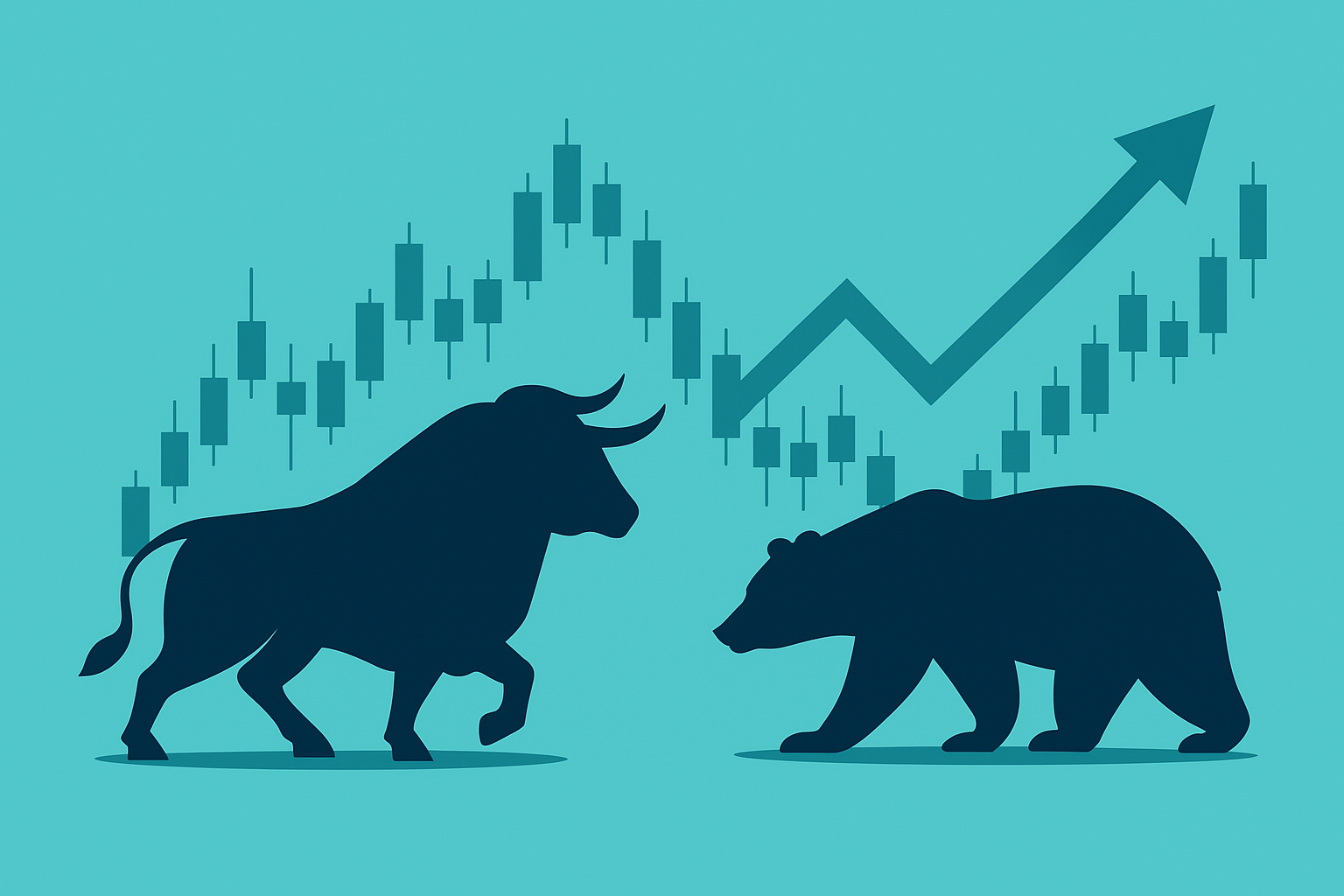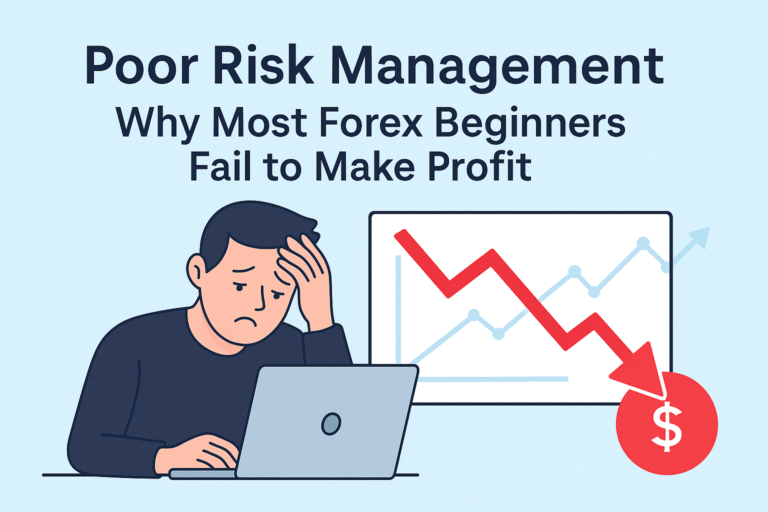Investment vs Trading – Which Is Better for Passive Income in 2025?
Looking to grow passive income
in 2025? Discover the key differences between investing and trading, their risks, tax impacts, and profit potential. Find out which strategy fits your financial goals best.

Many people wonder if investing or trading in the stock market is better for passive income. Investing focuses on long-term growth and can bring steady returns through tools like mutual funds or dividend income. 1 This blog will break down both approaches, explain how each works, and help you find which fits your financial goals and risk tolerance best. 3 Keep reading to see which path might grow your money over time. 2
Key Takeaways
- Investing is for the long term and can grow money over time with less risk. It uses mutual funds, stocks, and bonds. The S&P 500 has returns of about 10% per year.
- Trading is short-term and aims for quick profits but comes with higher risks. Strategies include day trading and swing trading, which need close market watch.
- Long-term investing benefits from compounding interest and lower taxes on gains held over a year. Dividends also add to returns.
- Trading offers fast gains but faces higher tax rates on profits made in less than a year. Costs like fees can reduce earnings.
- Choosing between investing and trading depends on personal goals, risk tolerance, and if you prefer steady growth or quick wins.
Understanding Investment and Trading
Investment and trading both deal with financial markets, but they use different methods to grow your wealth. Knowing how concepts like risk management, stock market basics, mutual funds, index funds, technical analysis, and fundamental analysis work can help you make smart choices for passive income… keep reading to see which path fits your goals best.
What is Investing?
Investing means buying financial assets, like stocks, mutual funds, or exchange-traded funds, with the goal of growing your money over time. Investors focus on long-term goals and often hold their investments for years or even decades.
The S&P 500 index has given average annual returns just above 10%. 1 Warren Buffett recommends passive investing in broad market index funds such as the S&P 500 because it spreads out risk and can deliver steady growth.
Long-term investors may benefit from lower taxes on capital gains if they wait at least a year before selling. Dividends are another perk; since 1930 to 2021, dividends have added up to about 40 percent of total returns from the S&P 500. 1 Many choose investment accounts like individual retirement accounts or health savings accounts to build wealth while saving on taxes. Good asset allocation and patience help investors reach their financial goals with less daily stress than active trading.
What is Trading?
Trading means buying and selling financial assets like stocks, futures contracts, or exchange-traded funds (ETF) for short-term profit. Day traders or swing traders may hold these assets for just a few minutes, hours, days, or weeks.
Margin trading lets you borrow money from a brokerage using a margin account to increase your position, but this also increases risk. Options trading and contract-for-difference (CFD) trading are popular with those aiming for quick returns. 1
A trader needs to watch the stock market closely every day. Market volatility leads to frequent ups and downs in asset prices. Trading profits earned on stocks held less than one year face higher tax rates under capital gains tax rules in the United States.
Traders must act fast on information about supply and demand changes or mispricings in an underlying asset’s value. Each trade comes with transaction costs like bid-ask spread and fees that can add up quickly.
Successful traders focus on risk management first; profits come second.
Key Differences Between Investing and Trading
Investing and trading offer different ways to earn money from the stock market, each with its unique style. Mutual funds, day trading, derivatives like swaps and cfd trading—even tools such as exchange-traded notes—can shape your approach…so understanding these differences helps you set clear investment objectives for your journey ahead.
Time Horizon
Investors hold assets, like mutual funds or exchange-traded fund (ETF) shares, for years or even decades. They watch their investments grow with market performance and benefit from long-term compounding.
This approach lets them defer capital gains tax until selling, which helps build wealth over time. “Time in the market is more important than timing the market,” as Bank of America says. 2
Traders focus on short-term profit instead. They buy and sell stocks, CFD contracts, or currency exchange positions within days to months. Their goal is quick returns, not holding for years.
Stock trading or day trading needs active management and fast decisions based on current trends rather than waiting for slow growth. The shorter time horizon means higher risk levels but faster results—if traders use smart risk management and monitor margin trading closely. 2
Risk Level
Investing in assets like mutual funds typically carries lower risk. This is due to the long-term approach and diversification across many stocks or bonds. Diversified funds also spread out the danger, so a drop in one asset has less effect on your whole portfolio.
Over time, compounding interest growth can help reduce short-term swings caused by market volatility. 3
Trading involves much higher risk because you buy and sell more often. Day trading and margin trading can lead to quick profits but also fast losses if prices move against you. Lack of financial education makes this even riskier for hobbyists who use leveraged accounts or complex trading algorithms without enough experience. 3
A diversified fund never puts all its eggs in one basket.
Profitability potential depends on your strategy, which we’ll see next.
Profitability Potential
Profit from trading can come quickly. Day trading, swing trading, and margin trading rely on short-term price changes in the stock market for fast gains. Some traders double their money in days with lucky picks.
Short-term profit sounds exciting, but taxes take a big chunk. The IRS taxes these profits as regular income, which is more than long-term capital gains tax rates. 4
Long-term investors often see an average return of about 10 percent per year if they stay invested through market ups and downs. Mutual funds managed by skilled fund managers aim to match or beat major indexes like Dow Jones Indices or S&P 500.
These investments might not make you rich overnight but build wealth slowly and steadily through compounding effects and dividend income. Different goals and time frames shape how much each approach can earn for you over time—choose what fits your risk tolerance best. 2
Strategy and Approach
Investors use a long-term plan. They buy stocks, mutual funds, or fixed-income investments and hold them for years. This strategy lets money grow over time with market performance, dividends, and the power of compounding.
Many choose tools like individual retirement accounts (IRAs) to help with tax implications, capital gains tax management, and building passive income. 3
Traders work on short-term profit from price swings in the stock market. Day trading or swing trading both need quick decisions based on technical analysis and news events. Margin trading can increase possible returns but also adds more risk if market volatility spikes.
Traders must keep an eye on net asset value, expenses, currency exchange rate shifts, and practice strong risk management every day for success. 3
Investment for Passive Income
Long-term investing in mutual funds or fixed income investments can help you build passive income, grow your money with compounding, and support future financial goals—keep reading to see how this strategy could work for you.
Benefits of Long-Term Investing
Long-term investing helps you build wealth over time. It makes your money work for you, even while you sleep.
- Wealth grows because of the compounding effect. This means your investments earn money, and then those earnings earn more money over years. 5
- You pay less in fees with fewer trades. Long-term investors don’t buy and sell often, so they save on transaction costs.
- Investing for many years can lower the capital gains tax you owe. You pay taxes at a reduced rate for profits on investments held longer than a year.
- You get to take advantage of dividend payments. Many stocks pay dividends, which is extra cash in your pocket just for holding onto them.
- Historical data shows that the market tends to go up over time. The S&P 500, for example, has had returns averaging more than 10% annually.
- A long-term focus allows for clearer financial goals. With time on your side, you can invest with specific objectives in mind like retirement or buying a house.
- Markets fluctuate but long-term investing smooths out these ups and downs. By staying invested, you reduce the risk of selling at low prices during bad times.
- Diversification becomes easier with a long-haul view. Spreading investments across different assets reduces risk and can lead to better returns.
- Emotional trading decreases since you’re not reacting to short-term market volatility. This disciplined approach leads to better decision-making.
Long-term investing suits those who prefer a hands-off approach while still watching their wealth grow steadily over time.
Compounding Effect
Money in mutual funds or stocks can grow much faster when you let gains build on past gains. This is called the compounding effect. Even small returns can turn into big sums as months and years pass, making it a key idea for passive income seekers. 6
For example, if you start with $10,000 and earn 20 percent each year for five years, your money grows to $24,883 instead of just $20,000. The longer you invest—like decades not days—the more powerful this effect becomes.
Regular contributions boost growth even more because every dollar starts earning too. Famous investors like Warren Buffett use compounding as their secret weapon; they focus on long-term market performance rather than chasing short-term profit or trying margin trading tricks.
Compounding is the eighth wonder of the world, said Albert Einstein. He who understands it earns it; he who doesn’t pays it.
Dividend Income
Dividend income offers steady cash flow from stocks and mutual funds. Companies like those in the S&P 500 often pay dividends if they are well-established and show strong management.
These regular payments signal financial health, giving traders more confidence during market volatility. From 1930 to 2021, over 40% of the S&P 500’s total return came from dividends. 7
Qualified dividends bring tax advantages, as they’re taxed at lower rates than standard income or capital gains tax. This means you can keep more profit each year while building wealth through compounding.
Many financial advisors point to dividend-paying assets as a core strategy for passive income goals. Investing with this approach rewards patience with reliable returns—even when stock prices fluctuate. 7
Trading for Passive Income
Trading can offer fast gains if you use tools like margin accounts, day trades, or swing positions in liquid assets. This approach needs close attention and strong risk management skills—perfect for those who want active control over their money’s market value and growth potential.
Types of Trading (Day Trading, Swing Trading)
Trading in the stock market can lead to potential profits. Two popular types are day trading and swing trading.
Day Trading:
- This type involves buying and selling stocks within the same day.
- Traders need to pay close attention to market movements to make quick decisions.
- It requires a big time commitment, making it almost a full-time job.
- Day traders often use margin trading to increase their purchase power, which also raises risks. 8
- Because of rapid buying and selling, capital gains tax may affect profits.
Swing Trading:
- Swing traders hold onto stocks for several days or weeks.
- They look for trends in the market to make their moves. 9
- This method has less pressure than day trading but still needs regular monitoring of the market.
- Swing trading can lead to short-term profit without the intense daily focus required by day trading.
- Understanding market volatility is key for swing traders to pick the right times to buy and sell.
Both types demand a good understanding of the stock market and an ability to handle risk. Each trader must consider their time availability, financial goals, and risk tolerance before choosing their path.
Potential for Quick Returns
Many traders chase quick profits through short-term stock market moves. Day trading and swing trading use technical analysis to spot price changes within hours or days. Margin trading can boost returns in a rising market, but it also increases risk if prices fall fast.
High-frequency traders look for tiny gains across many trades each day. 6
Short-term profit sounds tempting; some speculators do see large gains over a few weeks or months. Still, the IRS taxes these capital gains as regular income, not at long-term rates, which means you might pay more tax on your earnings.
Successful traders stay alert, manage risk every day, and need strong financial education from sites like fidelity.com before entering this fast-paced arena. 10
Short-term gains can be appealing for their speed, but they demand constant focus and carry higher risks.
Active Management Requirements
Active trading takes time, sharp focus, and plenty of research. Traders must watch the stock market daily and study market performance closely. Success depends on strong risk management and emotional discipline.
A small slip can lead to big losses or missed gains.
Active managers charge higher fees than most mutual funds because they do more work, like using margin trading or tax-loss harvesting strategies. Even with all this effort, few active investment managers beat passive index funds over time. 11 Many financial advisers recommend active approaches for people who want flexibility in their investment objectives or need quick responses to sudden market volatility and short-term profit chances.
Pros and Cons of Investing vs. Trading
Long-term investing in mutual funds or liquid securities can help you build wealth while managing your risk level over time—helpful for steady financial growth. Short-term trading, such as day trading with a margin account, may offer quick gains but needs more active attention, strong risk management skills, and close tracking of market volatility.
Advantages of Investing
Investing is a smart way to grow your wealth over time. It comes with many benefits that can help you reach your financial goals. Here are some advantages of investing:
- Investing helps build wealth through compounding returns. Your money grows faster because the profits you make are reinvested to generate more earnings.
- It often comes with lower transaction costs since you’re making fewer trades. This means more of your money stays invested and has the potential to grow.
- You pay less in capital gains taxes for holding investments longer than a year, which saves you money.
- Long-term investing is tied to business success. When companies do well, investors often see their investments grow too.
- You can receive dividend income from stocks. This creates a source of passive income that can pay out regularly.
- The risk level tends to be lower with investing compared to trading. By holding onto investments for years, you’re less affected by short-term market volatility. 6
- There’s also the possibility of earning interest from bonds or mutual funds as part of your investment portfolio.
- Investing allows you to take advantage of tax-efficient accounts like IRAs and 401(k)s, reducing your tax bill and helping your savings grow faster.
These points show why investing is a powerful tool for anyone looking to build long-term wealth and achieve financial security.
Disadvantages of Investing
After exploring the bright side of investing, it’s time to look at some challenges. Investing comes with its own set of hurdles that every trader or hobbyist should consider.
- Your money can be locked in for a long time. If you invest in mutual funds or stocks for the long term, getting your money out quickly is not easy without losing some value.
- The risk of losing money is real. Market performance can go down as well as up. You might not get back what you put in. 12
- Keeping up with inflation can be tough. Sometimes, investments do not grow fast enough to outpace the rising cost of living.
- Taxes and fees cut into profits. Capital gains tax and fees from investment advisers reduce what you earn.
- Requires patience and emotional stability. Watching market volatility can be stressful, needing a calm mind to avoid rash decisions.
- Needs research and financial education. Understanding where to put your money requires learning about the stock market and investment objectives.
- Interest rates affect investment value. If rates go up, the value of bonds goes down, which can impact your portfolio negatively.
Investing takes work and comes with no guarantees, but knowing these disadvantages helps in making informed decisions.
Advantages of Trading
Switching gears from the downsides of investing, let’s explore the upsides of trading. This approach aims for quicker profits and allows traders to leverage market movements to their advantage.
- Quick profit potential: Traders can see returns in a shorter timeframe, making it exciting for those looking for fast gains. 13
- Leverage market volatility: Rapid price movements in the stock market offer chances to profit from short-term investments.
- Active engagement with the market: Trading requires keeping an eye on trends and making decisions based on current events, which keeps participants actively involved.
- High-Frequency Trading (HFT) strategies can be employed to take advantage of very short-term market inefficiencies, potentially leading to substantial gains.
- Variety in trading styles: From day trading to swing trading, there are multiple approaches one can choose based on their risk tolerance and time availability.
- Potential tax advantages with short-term capital gains, depending on individual financial situations and local tax laws.
- Learning opportunities abound as active trading helps build a deeper understanding of financial markets and how different factors influence stock prices.
- Opportunity for diversification: By engaging in various types of trades across different sectors or assets, traders can spread out their risk.
Disadvantages of Trading
After exploring the upsides of trading, it’s crucial to weigh them against the downsides. Trading isn’t always smooth sailing. Here are some challenges traders face:
- High risk of loss. Traders often deal with more risk, especially with short-term market swings. This means you can lose money quickly. 1
- Requires constant market watch. You must track the stock market closely every day. This can take a lot of time and stress.
- Complex financial products. Using options and futures for trading involves complex rules. It’s easy to make mistakes if you’re not careful.
- Higher tax bills. Short-term profits from trading are taxed at higher rates than long-term investments. This can eat into your earnings. 1
- Stressful and demanding. Making quick decisions based on market changes is stressful. Not everyone enjoys this pressure.
- Needs lots of research. Successful trading requires understanding not just stocks but also market trends and news that could affect prices.
- Costs add up. Every trade comes with fees or commissions, which can reduce your profits over time.
- Risk management is tough. You need a solid plan to manage risks in volatile markets, which requires skill and experience.
These points show trading has its own set of challenges that you must consider before diving in.
How to Choose Between Investing and Trading
Matching your investment objectives, risk tolerance, and time commitment to either investing or trading makes your choice clearer. A solid grasp of market performance, financial education, and the basics of margin trading or mutual funds will guide you toward smart decisions—now explore more strategies that can shape your future.
Personal Goals and Risk Tolerance
Personal goals shape every choice in the stock market. Some want steady income, like dividend payments from mutual funds or stocks. Others seek short-term profit through strategies such as day trading or margin trading.
Goals guide your plan and influence your level of risk tolerance. 6
Risk tolerance means how much loss you can handle without stress or regret. People with low risk tolerance may prefer bonds, mutual funds, or long-term investing for stable growth.
Those who chase quick gains often pick active trading despite high market volatility and greater capital gains tax risks. Many hobbyists blend both styles to match their financial goals and comfort levels. 3
Every investment decision should reflect your personal goals and appetite for risk.
Market knowledge also plays a role here — more knowledge often builds confidence in handling swings in net asset value (NAV) or credit scores linked to some investments such as mortgage lenders’ products.
Each approach has its own tax implications and requirements for ongoing evaluation, so setting clear investment objectives before starting can save time, money, and worry down the road.
Time Commitment and Knowledge Level
Personal goals and risk tolerance set the stage, but your daily schedule and what you know also matter a lot. Trading in the stock market usually demands much more time each day than long-term investing.
Traders often watch price charts, analyze financial data, follow news headlines, and react to sudden changes in market performance. This takes sharp focus and many hours every week. 6
Investment, like buying mutual funds or holding stocks for years, needs less hands-on attention. You may only check your investments monthly or quarterly instead of every day. But even this approach calls for a basic understanding of how capital gains tax works or how dividends boost passive income over time.
Day trading often involves margin trading, quick decisions about line of credit use, reading your credit report well…and handling stressful moves on fast-changing days. Investors need less technical skill up front; traders must learn complex strategies to manage risk if they want short-term profit without too much loss.
Financial education helps both groups succeed—though traders face higher emotional challenges due to volatility and constant money movement. Setting clear investment objectives shapes which path will fit your lifestyle best—and which suits what you know now or hope to learn soon.
Conclusion
Choosing between investment and trading comes down to your financial goals, risk comfort, and time. Long-term investing builds passive income with tools like mutual funds or dividend stocks.
Trading can bring quick profits but demands more skill and attention, like day trading in the stock market. Both paths hold risks, from market swings to tax implications such as capital gains tax.
Build your knowledge before jumping in—smart choices today set up stronger returns tomorrow.
FAQs
1. What’s the difference between investing and trading in terms of passive income?
Investing typically involves buying assets such as stocks or mutual funds, with a long-term perspective. The goal is to earn passive income over time through capital gains or dividends. On the other hand, trading often refers to short-term profit strategies like day trading or margin trading, where profits can be realized quickly but may also carry higher risk.
2. How do tax implications differ between investing and trading?
The tax implications vary significantly between investing and trading. Investment earnings are usually subject to capital gains tax which might be lower than ordinary income tax rates if held for more than a year while earnings from day-to-day trades are taxed based on personal income rates.
3. How does risk tolerance factor into choosing between investment and trade?
Risk tolerance plays a crucial role when deciding whether to invest or trade. Investing generally suits those with low-to-moderate risk tolerance as it aims at steady growth over time despite market volatility. Trading requires high-risk tolerance due to frequent market performance fluctuations.
4. Can financial education help me make better decisions about investing versus trading?
Absolutely! A sound financial education helps you understand key concepts such as investment objectives, risk management, market volatility, and advertiser disclosure rules that can guide your decision-making process in both investing and trading.
5. Should I consider my financial goals before choosing between investment and trade?
Yes indeed! Your financial goals should always guide your choice between investing and trading – whether you’re saving for retirement, paying off student loans, earning a lump sum for a big purchase or creating an emergency fund; each goal may require different strategies.
References
- ^ https://www.fidelity.com/learning-center/smart-money/trading-vs-investing
- ^ https://www.bankrate.com/investing/investing-vs-trading/ (2024-04-17)
- ^ https://www.cmelitegroup.co.uk/knowledge-hub/investing-vs-trading/
- ^ https://www.nerdwallet.com/article/investing/stock-trading-vs-investing (2024-09-10)
- ^ https://www.researchgate.net/publication/280614859_Benefits_and_Pitfalls_of_Long-Term_Investing
- ^ https://www.investopedia.com/ask/answers/12/difference-investing-trading.asp (2025-04-14)
- ^ https://saratogainvestmentcorp.com/articles/is-dividend-investing-worth-it-the-complete-guide/
- ^ https://appreciatewealth.com/blog/swing-trading-vs-day-trading
- ^ https://www.nerdwallet.com/article/investing/what-is-swing-trading-vs-day-trading (2025-01-16)
- ^ https://www.bankrate.com/investing/active-versus-passive/
- ^ https://executiveeducation.wharton.upenn.edu/thought-leadership/wharton-wealth-management-initiative/wmi-thought-leadership/active-vs-passive-investing-which-approach-offers-better-returns/
- ^ https://capex.com/en/academy/trading-vs-investing (2024-09-30)
- ^ https://www.trading212.com/learn/investing-101/investing-vs-trading






